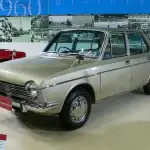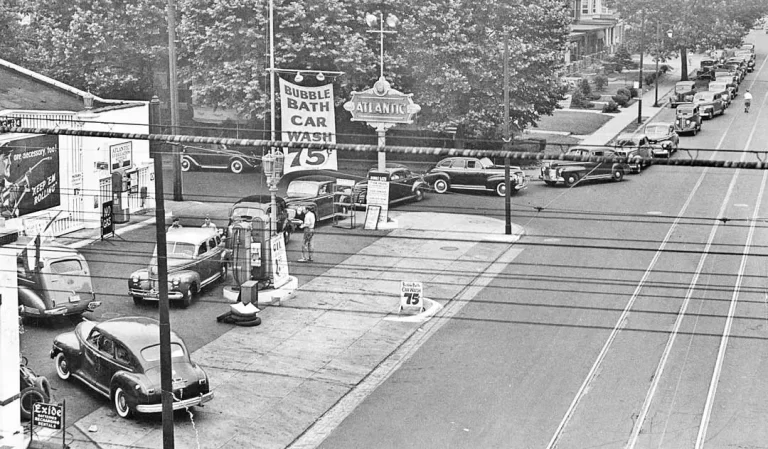
For car enthusiasts and DIY mechanics alike, the love affair with automobiles often extends to the tools used to maintain and repair them. Mechanics’ tools are the unsung heroes behind every successful car project, whether a routine oil change or a complete engine overhaul.
Below, we’ll take a captivating journey through the history of mechanics’ tools, exploring how these essential implements have evolved over the centuries. Additionally, we’ll provide valuable tips for building your own toolkit, ensuring that you’re well-equipped for any automotive adventure that comes your way.
Early Innovations
Mechanics’ tools have a long and storied history that dates back to the earliest days of human civilization. In ancient times, as people developed increasingly complex machinery and devices, the need for specialized tools became apparent. For instance, ancient Egyptians and Greeks used basic hand tools made from stone, wood, and bone to construct chariots and other vehicles.
The Bronze Age brought significant advancements in toolmaking. Bronze, a durable and malleable alloy of copper and tin, allowed for the creation of more intricate and effective tools.
The Renaissance
The Renaissance period witnessed a resurgence of interest in science, art, and technology, leading to significant developments in mechanics’ tools. Leonardo da Vinci, the iconic Renaissance polymath, designed various ingenious machines and tools, some of which served as precursors to modern mechanics’ tools.
The Industrial Revolution
The Industrial Revolution brought about a dramatic shift in the world of mechanics’ tools. This period of industrialization and technological advancement revolutionized manufacturing processes and led to the mass production of tools. The development of new alloys, such as steel, transformed the landscape of toolmaking. Steel offered greater strength, durability, and resistance to corrosion compared to previous materials. This breakthrough allowed for the creation of stronger and more reliable mechanics’ tools.
The 20th Century: Tools for the Masses
The 20th century marked a period of unprecedented growth in the automotive industry, and mechanics’ tools evolved to keep pace with technological advancements. Many companies began producing high-quality, standardized tools. The 20th century also witnessed the introduction of power tools, such as electric drills, impact wrenches, and pneumatic tools. These tools significantly improved efficiency and speed in automotive repair shops and garages.
The Modern Era: High-Tech Mechanics’ Tools
Today, mechanics’ tools have reached unprecedented levels of sophistication and precision. Modern mechanics rely on diagnostic tools, such as OBD-II scanners and code readers, to quickly identify and
troubleshoot vehicle issues. Plus, digital torque wrenches have replaced traditional torque wrenches in many automotive applications.
Advancements in 3D printing technology have allowed for the rapid prototyping of custom tools and components, too. Mechanics can now design and produce specialized tools tailored to unique repair challenges.
Building Your Own Mechanics’ Toolkit
Now, let’s shift our focus to building your own toolkit. Whether you’re an experienced DIY mechanic or just starting your journey, here are some essential tips for assembling a comprehensive and reliable collection of mechanics’ tools.
1. Start with the Basics
- Every mechanic’s toolkit should include foundational tools such as:
- Wrenches and socket sets in various sizes.
- Screwdrivers, both flathead and Phillips.
- Pliers, including needle-nose and slip-joint varieties.
- Hammers and mallets.
- Safety equipment, including gloves, safety glasses, and hearing protection.
2. Invest in Quality
Quality should be your top priority when selecting tools. Well-known brands with a reputation for durability and precision are reliable choices. While high-quality mechanics’ tools may come with a higher price tag, their performance and longevity are worth the investment.
3. Consider Specialized Tools
As you gain experience, you may find that specialized tools are necessary for specific tasks. These tools may include:
- Torque wrenches for accurate fastener tightening.
- Diagnostic equipment like OBD-II scanners.
- Power tools such as impact wrenches, drills, and grinders.
4. Organize Your Toolkit
A well-organized toolkit not only makes your work more efficient but also helps you keep track of your tools. Invest in a strong toolbox with multiple compartments and drawers. Use foam inserts or shadow boards to keep tools organized and easily accessible.
5. Stay Informed and Educated

Building a toolkit is just the beginning; understanding how to use your tools effectively is equally important. Invest time in learning proper tool usage, maintenance, and safety precautions. Online tutorials, automotive forums, and community workshops are valuable resources for expanding your knowledge.
The history of mechanics’ tools is a testament to human ingenuity and the relentless pursuit of perfection in the world of automotive repair and maintenance. From humble beginnings, these essential instruments have evolved to meet the ever-growing demands of mechanics and car enthusiasts.
As you embark on your own automotive journey, remember that building a well-rounded toolkit is not just about acquiring the right tools but also about developing the skills and knowledge to use them effectively and safely. With the right tools at your disposal and a commitment to continuous learning, you’ll be well-equipped to tackle any automotive project that comes your way, ensuring your passion for cars remains a fulfilling and rewarding pursuit.

















